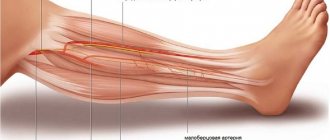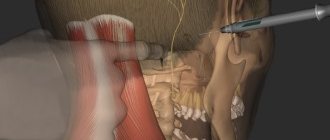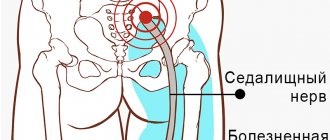Carpal tunnel syndrome of the hand ICD 10: symptoms, causes and treatment
Carpal tunnel syndrome ICD has characteristic signs that make it possible to identify it at the beginning of the development of the disease. First of all, it is tingling in the area of the hands, numbness of the fingers - especially the middle and index fingers. In addition, symptoms include:
- Weakness of the hands.
- Pain.
- The fingers reflexively unclench on their own.
- Inability to hold light objects in hand.
Often carpal tunnel syndrome ICD 10 is accompanied by arm pain at night. Immediately after identifying the first symptoms, you should consult a specialist.
Treatment can be conservative or surgical. The first option is suitable at the initial stage, when there are no severe complications yet. Surgery will be required if the disease is already advanced.
The main cause of carpal tunnel syndrome is sports or household injuries, sprains, and tumors in the wrist area. Other diseases can also provoke the development - gout, arthritis, diabetes.
Diagnostics
As a rule, the diagnosis is established on the basis of the characteristic clinical manifestations described above. It is convenient for the clinician to use a number of clinical tests that allow differentiating different types of carpal tunnel syndromes. In some cases, it is necessary to conduct electroneuromyography (the speed of impulses along the nerve) to clarify the level of nerve damage. Nerve damage, space-occupying lesions or other pathological changes causing carpal tunnel syndrome can also be determined using ultrasound, thermal imaging, MRI [Horch RE et al., 1997].
Carpal tunnel syndrome ICD 10 – treatment at the Surgery Center
ICD 10 carpal tunnel syndrome is successfully treated with timely treatment. If your fingers are numb or there are problems with limb mobility, the Surgery Center clinic will help you regain your health and get rid of the disease. We offer fast and painless treatment using modern methods.
Why patients choose us:
- Surgeons with more than 8 years of experience.
- We specialize in hand surgery.
- Painless surgery without discomfort.
- There are no hidden fees - the price already includes examination, diagnosis, surgery and subsequent hospital care.
- Convenient work schedule.
- Modern equipment guarantees quick recovery and minimal trauma in the process.
- Full support after surgery, including communication with the surgeon or a specialized specialist.
- Possibility of cash and non-cash payments.
Our patients receive qualified medical care and first-class service. We will help you regain your health! You can sign up for a consultation by ordering a call back on the website.
Carpal tunnel syndrome - symptoms and treatment
The initial method of treatment for patients with carpal tunnel syndrome can be a change in daily activity, the elimination of harmful occupational factors, and ergonomic organization of the workplace when working at a computer - the use of special mice, rugs and keyboards [23].
Another method that has been shown to be effective and safe is wrist orthosis, in which the wrist joint is placed in a neutral position. This minimizes the negative impact on the median nerve from the surrounding structures [5].
Many other techniques can be used in complex treatment: manual therapy, physiotherapy, kinesiotaping, but data on their effectiveness are contradictory [5].
Drug treatment is also used as therapy for patients with carpal tunnel syndrome. It is aimed at reducing inflammation and swelling in the carpal tunnel area, which leads to relief of symptoms.
A fairly large number of drugs are used in clinical practice, but for most drugs the effect is short-term and insignificant. An exception is corticosteroid drugs, especially when applied locally in the form of drug paraneural blockades (injection of an anesthetic into the space near the kidneys) [5].
There is also a wide variety of surgical treatment methods, which differ only in the options for surgical access [24]. However, the basis of any intervention is the dissection of the transverse ligament of the carpal tunnel and the release of the median nerve from compression (squeezing) by surrounding tissues.
The choice of surgery and treatment technique depends on many factors:
- degree of compression of the median nerve;
- presence of concomitant diseases;
- features of the anatomy of the carpal tunnel;
- surgeon preferences [25].
Surgery is a radical treatment method that normalizes the pressure inside the carpal tunnel. The effect of surgical treatment is superior to all currently existing conservative methods. In addition, people can return to their professional activities within two weeks after the operation. However, despite the widespread prevalence of carpal tunnel syndrome, there is still no uniform tactic for determining indications for surgery. Various authors offer their own criteria that allow selecting patients for surgical treatment, and in each case the decision is made individually [2][5].
Despite the variety of methods, there is no single approach to treating patients with carpal tunnel syndrome.
One point of view is that surgical treatment should be used only as a last resort: when conservative treatment is ineffective and in the presence of severe symptoms in the form of weakness and muscle wasting [26].
There is also an opinion that despite the wide variety of conservative treatment methods, their effectiveness is extremely low, so the achieved treatment result is short-lived. In this regard, it is not recommended to delay surgical intervention, since it is the most effective method of treatment [2][5].
Clinical manifestations
With the development of pronator teres syndrome, the patient complains of pain and burning 4–5 cm below the elbow joint, along the anterior surface of the forearm and pain radiating to the 1st–4th fingers and palm.
Tinel's syndrome. In case of pronator teres syndrome, Tinel's sign will be positive when tapping with a neurological hammer in the area of the pronator snuff box (on the inside of the forearm). Pronator-flexor test. Pronating the forearm with a tightly clenched fist while creating resistance to this movement (counteraction) leads to increased pain. Increased pain can also be observed when writing (prototype of this test). When examining sensitivity, a sensitivity disorder is revealed, involving the palmar surface of the first three and a half fingers and the palm. The sensory branch of the median nerve, innervating the palmar surface of the hand, usually passes above the transverse carpal ligament. The occurrence of sensory disturbances on the palmar surface of the first finger, the dorsal and palmar surfaces of the second and fourth fingers, with preservation of sensitivity in the palm, allows one to confidently differentiate carpal tunnel syndrome from pronator teres syndrome. Thenar atrophy in pronator teres syndrome is usually not as severe as in progressive carpal tunnel syndromes.
Pronator teres syndrome (Seyfarth syndrome)
Entrapment of the median nerve in the proximal part of the forearm between the pronator teres fascicles is called pronator syndrome.
This syndrome usually begins to appear after significant muscle activity over many hours involving the pronator and flexor digitorum muscles. Such types of activities are often found among musicians (pianists, violinists, flutists, and especially often among guitarists), dentists, and athletes [Zhulev N.M., 2005]. Long-term tissue compression is of great importance in the development of pronator teres syndrome. This can happen, for example, during deep sleep when the newlywed’s head is positioned for a long time on the partner’s forearm or shoulder. In this case, the median nerve in the pronator snuffbox is compressed, or the radial nerve in the spiral canal is compressed when the partner’s head is located on the outer surface of the shoulder (see radial nerve compression syndrome at the level of the middle third of the shoulder). In this regard, to designate this syndrome in foreign literature, the terms “honeymoon paralysis” (honeymoon paralysis, newlywed paralysis) and “lovers paralysis” (lovers paralysis) have been adopted. Pronator teres syndrome sometimes occurs in nursing mothers. In them, compression of the nerve in the area of the pronator teres occurs when the baby’s head lies on the forearm, he is breastfed, lulled to sleep, and the sleeping person is left in this position for a long time.
Radial nerve compression syndrome
Three variants of compression damage to the radial nerve can be distinguished: 1. Compression in the armpit area.
Rarely seen. It occurs as a result of the use of a crutch (“crutch paralysis”), and paralysis of the extensors of the forearm, hand, main phalanges of the fingers, abductor pollicis muscle, and supinator develops. The flexion of the forearm is weakened, the reflex from the triceps muscle fades. Sensitivity is lost on the dorsal surface of the shoulder, forearm, and partly the hand and fingers. 2. Compression at the level of the middle third of the shoulder (spiral canal syndrome, “Saturday night paralysis”, “park bench”, “bench” syndrome). It occurs much more often. The radial nerve, emerging from the axillary region, bends around the humerus, where it is located in the bony spiral groove (groove), which becomes the musculoskeletal tunnel, since the two heads of the triceps muscle are attached to this groove. During the period of contraction of this muscle, the nerve is displaced along the humerus and as a result can be injured during forced repeated movements in the shoulder and elbow joints. But most often, compression occurs due to compression of the nerve on the outer-posterior surface of the shoulder. This usually occurs during deep sleep (deep sleep often occurs after drinking alcohol, which is why it is called “Saturday night syndrome”), in the absence of a soft bed (“park bench syndrome”). Pressure on the nerve may be due to the location of the partner's head on the outer surface of the shoulder. 3. Compressive neuropathy of the deep (posterior) branch of the radial nerve in the subulnar region (supinator syndrome, Froese syndrome, Thomson-Kopell syndrome, “tennis elbow” syndrome). Tennis elbow, tennis elbow, or epicondyllitis of the lateral epicondyle of the humerus is a chronic disease caused by a degenerative process in the area of muscle attachment to the lateral epicondyle of the humerus. Compression syndrome of the posterior (deep) branch of the radial nerve under the aponeurotic edge of the short extensor carpi radialis or in the tunnel between the superficial and deep bundles of the supinator muscle of the forearm can be caused by muscle overload with the development of myofasciopathies or pathological changes in perineural tissues. It manifests itself as pain in the extensor muscles of the forearm, their weakness and hypotrophy. Dorsal flexion and supination of the hand, active extension of the fingers against resistance provoke pain. Active extension of the third finger while pressing it and simultaneously straightening the arm at the elbow joint causes intense pain in the elbow and upper forearm. Treatment includes general etiotropic therapy and local effects. Take into account the possible connection of tunnel syndrome with rheumatism, brucellosis, arthrosis of metabolic origin, hormonal disorders and other conditions that contribute to compression of the nerve by surrounding tissues. Anesthetics and glucocorticoids are injected locally into the area of the pinched nerve. Complex treatment includes physical therapy, the prescription of vasoactive, decongestant and nootropic drugs, antihypoxants and antioxidants, muscle relaxants, ganglion blockers, etc. Surgical decompression with dissection of the tissues compressing the nerve is indicated if conservative treatment is unsuccessful. Thus, hand tunnel syndromes are a type of damage to the peripheral nervous system caused by both endogenous and exogenous influences. The outcome depends on the timeliness and adequacy of treatment, correct preventive recommendations, and the patient’s orientation in choosing or changing a profession that predisposes to the development of tunnel neuropathy.
The article uses drawings from the book by S. Waldman. Atlas of commom pain syndromes. – Saunders Elsevier. – 2008.








